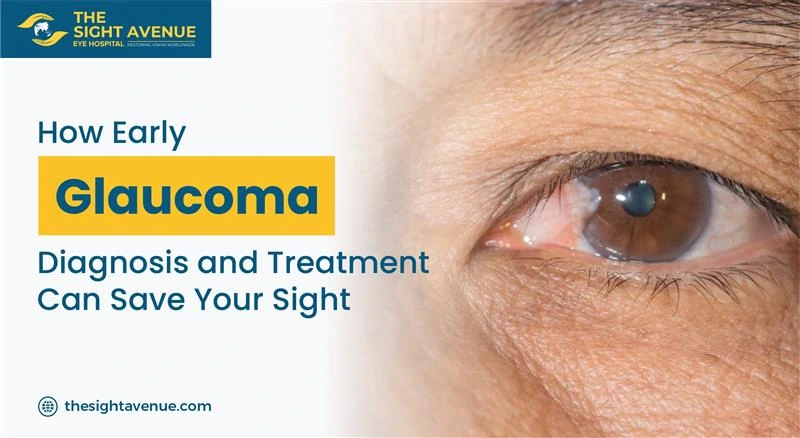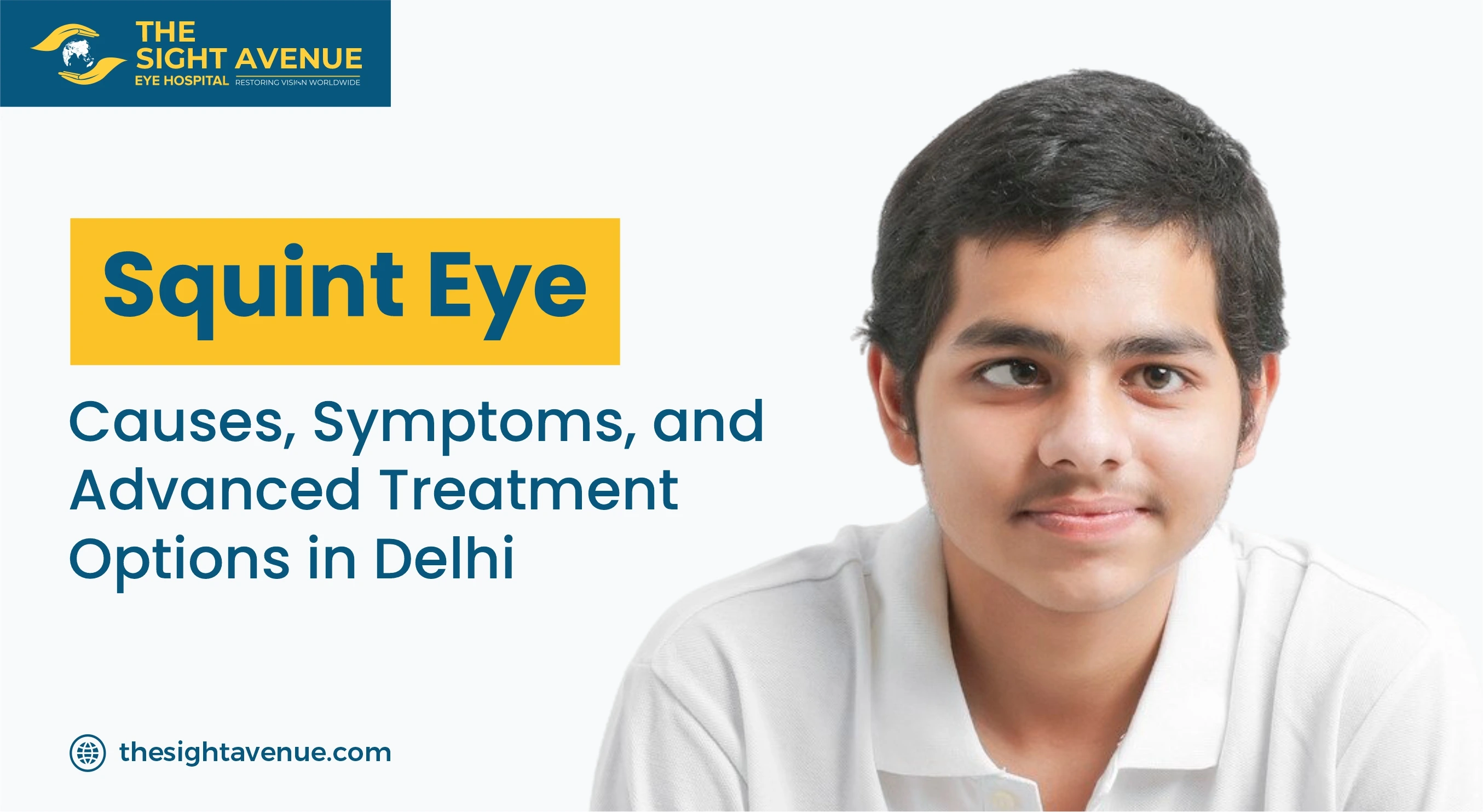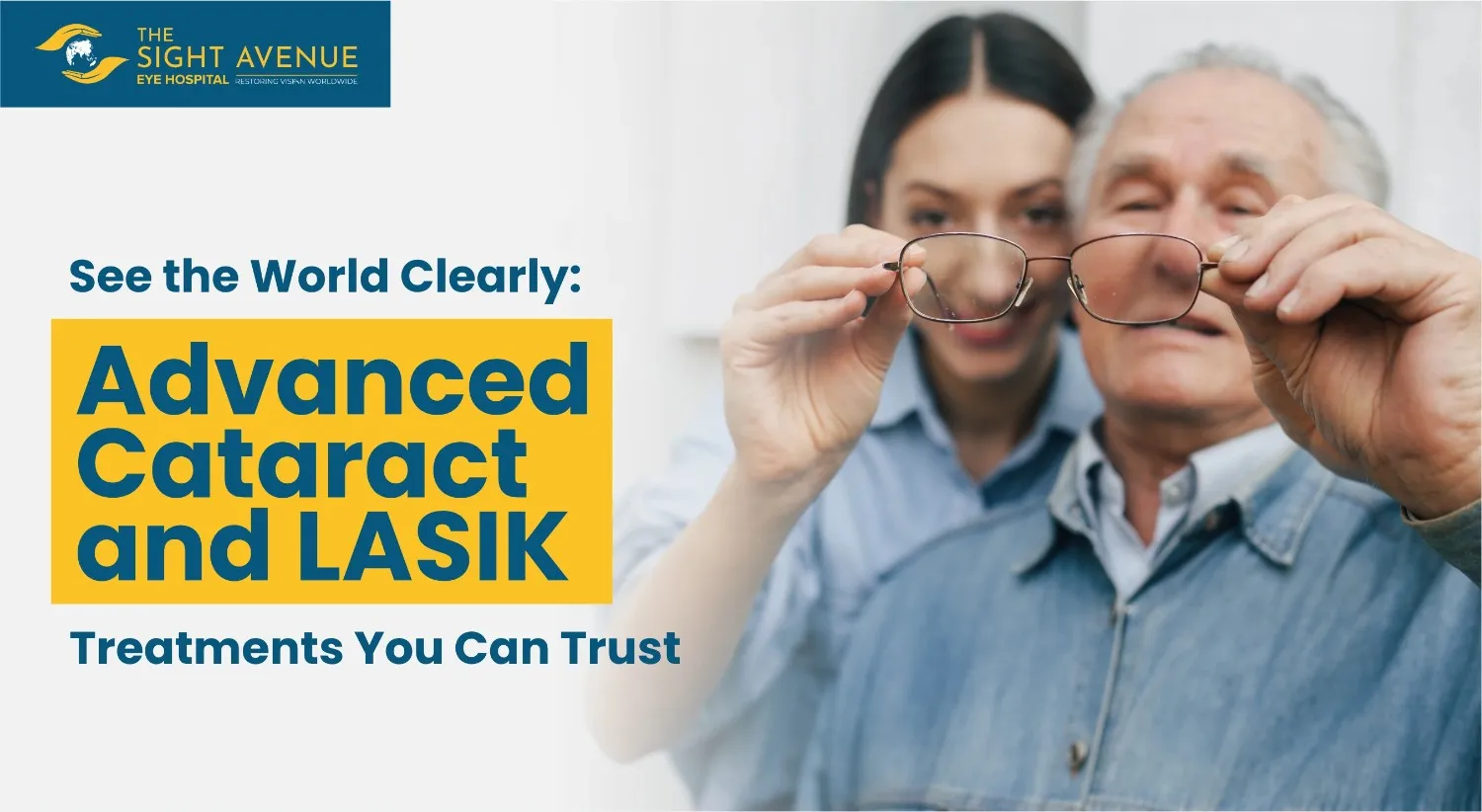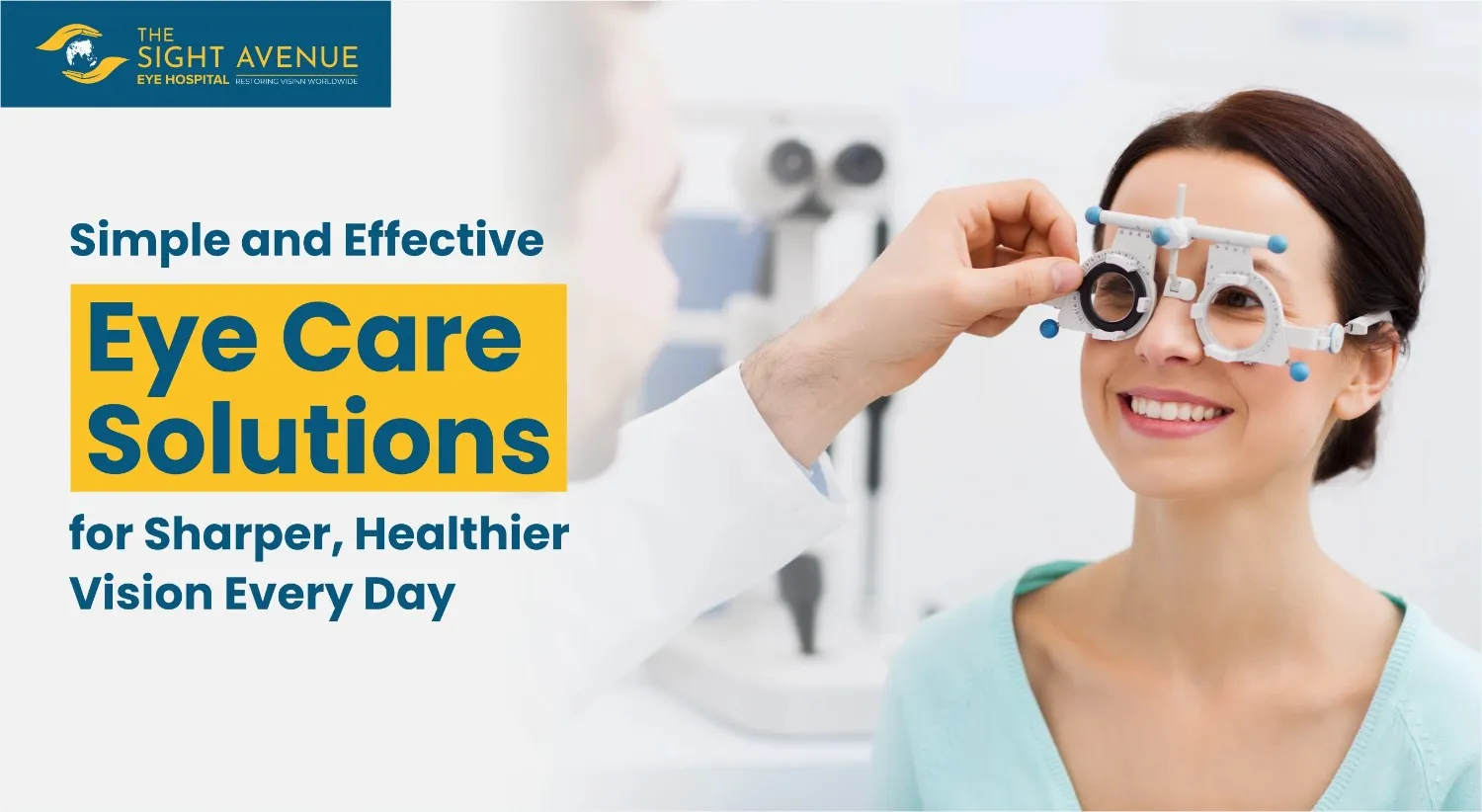What is Myopia or (Nearsightedness)?

Myopia is a common eye disease that affects many people around the world, and it is also called by one more name nearsightedness. It is a refractive error that causes distant objects to appear blurry, while nearby objects remain clear. Myopia is a condition in which the cornea (the clear front of the eye) is too curved or the eyeball is too long, causing light to focus in front of the retina rather than directly on it. This leads to difficulty seeing objects in the distance, while objects up close remain in focus. Myopia can develop at any age, but typically begins in childhood and can worsen during adolescence. While it is a common condition, myopia can cause significant impairment in daily life, and treatment options are available to manage and correct the condition.
This blog may help you to understand What is myopia, its types, symptoms, causes, diagnosis, precautions, treatment options, and when to see a doctor.
What is Myopia?
Myopia or Nearsightedness is a vision condition where a person can see objects near them clearly, but objects farther away appear blurry. This occurs when the eye's shape causes light to bend incorrectly, leading to the image being focused in front of the retina instead of on it.
Most of the time, myopia is caused by the eye getting longer, which bends the light-sensitive retina and makes it look blurry. This leads to blurry vision and difficulty seeing objects in the distance. The irregular shape of the cornea or lens can also alter the amount of light that enters the eye, leading to myopia.
Types of Myopia
Myopia, or nearsightedness, is a frequent eye ailment with a few distinct types. The severity of the ailment is used to classify some forms of myopia, while the underlying reason is used to classify others. Those suffering from myopia would do well to familiarize themselves with the various forms of the condition. The most frequent types of myopia are as follows:
Simple Myopia:
This is the most common type of myopia and is usually caused by an elongated eyeball or an overly curved cornea.Degenerative Myopia:
Also known as pathological myopia, this type of myopia is more severe and can lead to vision loss due to changes in the retina and other parts of the eye.Night Myopia:
This type of myopia occurs when the eye struggles to adjust to low light conditions, making it difficult to see objects in the distance at night.Induced Myopia:
This can be caused by various factors, such as prolonged reading, excessive use of digital devices, or spending extended periods in dimly lit environments.Index Myopia:
Index myopia is a type of myopia that can develop due to changes in the refractive index of the eye's lens, causing light to focus incorrectly.Pseudomyopia:
This is a temporary form of myopia that can occur due to eye strain, fatigue, or certain medications. It typically resolves once the underlying cause is addressed.
It is worth noting that there are other less common types of myopia as well.
Symptoms of Myopia
The most common symptom of myopia is blurred vision, especially when looking at distant objects. Other symptoms may include:
- Difficulty seeing road signs or whiteboards in the classroom
- Squinting to see distant objects
- Headaches or eye strain
- Difficulty seeing while driving at night
Causes of Myopia
The exact cause of myopia is unknown, but several factors are believed to contribute to its development, including:
- Genetics: Myopia tends to run in families, suggesting that it may have a genetic component.
- Environmental factors: Studies suggest that spending too much time indoors or doing near work, such as reading or using a computer, may increase the risk of developing myopia.
- Eye shape: People with longer eyeballs or a more curved cornea are more likely to develop myopia.
Diagnosis of Myopia
Nearsightedness, or myopia, is usually diagnosed by giving a person a full eye exam to measure how well they can see and how much they are nearsighted. Refraction testing is also done to determine the best prescription for glasses or contact lenses. Additionally, a dilated eye exam may be performed to check for any underlying eye conditions. Regular eye exams starting from childhood are important for the early detection and management of myopia. With proper diagnosis, myopia can be effectively managed and corrected to improve a person's vision and overall quality of life.
- A comprehensive eye exam is typically performed to diagnose myopia.
- The ability to see small letters at a distance is evaluated with a visual acuity test.
- Refraction testing is also done to determine the degree of myopia. The degree of nearsightedness can be determined by having the subject gaze through a variety of lenses.
- In some cases, the doctor may use a retinoscope to evaluate the eyes and determine the best prescription for glasses or contact lenses.
- Also, the doctor may do an eye exam with the pupils dilated to look for diseases like cataracts or macular degeneration that could be causing myopia.
- Children should have regular eye exams starting at age 6 months, and again at ages 3 and 5, to ensure any vision problems are caught and treated early.
Precautions for Myopia
People with myopia can take some precautions to control their condition. One of the most important is to get regular eye exams to monitor changes in vision and prescription needs. It's also important to take frequent breaks when reading or using a computer to avoid eye strain and to maintain good lighting when doing close-up work.
Precautions you can take to reduce your risk of developing the condition or slow its progression:
- Take frequent breaks when doing near work, such as reading or using a computer.
- Spend time outdoors: Studies suggest that spending time outdoors may reduce the risk of developing myopia.
- Maintain a healthy diet: Eating a diet rich in fruits and vegetables may help protect against myopia.
- Getting your eyes checked regularly can help find myopia and other eye problems early, when they are easier to treat.
Complication Due to Myopia
While myopia, or nearsightedness, may seem like a relatively benign eye condition, it can lead to several complications that affect vision and overall eye health. When left untreated or unmanaged, myopia can cause problems such as eye strain, headaches, and difficulty driving or seeing in low-light conditions. It is important to understand and manage myopia to prevent these complications and maintain good eye health.
Given below are some complications that may arise due to myopia:
- The strain on the eyes: Individuals with myopia tend to squint or strain their eyes while trying to focus on distant objects.
- Impaired visual performance: Myopia can affect visual performance in various activities such as driving, sports, and even reading.
- Increased risk of eye diseases: People with high levels of myopia are at greater risk of developing other eye problems such as glaucoma, cataracts, and retinal detachment.
- Reduced quality of life: The impact of myopia on daily activities can result in a reduced quality of life, affecting academic or professional performance, as well as social activities.
- Progression of myopia: In some cases, myopia can worsen over time, leading to a higher risk of complications and the need for more aggressive treatment options.
When to See a Doctor
If you feel blurry vision, headaches, eye pain, or any of the signs of myopia, then you should consult a doctor for early treatment. A proper diagnosis and course of treatment can be arrived at after a thorough examination of the eyes.
Sudden changes in vision or other symptoms related to the eyes should prompt a visit to the doctor since they could be indicators of a more serious problem.
Treatment Options for Myopia:
There are several treatment options available for myopia, including:
- Eyeglasses or contact lenses: Corrective lenses can help focus light on the retina, improving vision.
- Refractive surgery: Procedures such as LASIK Surgery or PRK can reshape the cornea, correcting the refractive error and improving vision.
- Orthokeratology: This involves wearing special contact lenses that reshape the cornea overnight, allowing for clear vision during the day.
- In some cases, myopia may also be treated with atropine eye drops, which can slow the progression of the condition in children.
Conclusion
Myopia is a common eye condition that can cause blurred vision and other symptoms. While there is no sure-fire way to prevent myopia, taking precautions such as spending time outdoors, taking frequent breaks when doing near work, and maintaining a healthy diet can help reduce the risk of developing the condition or slow its progression. Treatment options include corrective lenses, refractive surgery, orthokeratology, and atropine eye drops. If you are experiencing symptoms of myopia or want to know what myopia lens price is?, then it is important to visit the best eye hospital in Delhi for a comprehensive eye exam.
Eye problems? Searching for an eye specialist near me in Delhi NCR? The Sight Avenue has 5 eye clinics in Delhi NCR. Contact us today!
Eye Hospital in Delhi
- The Sight Avenue
- The Sight Avenue
- The Sight Avenue
E-82-A, Ground Floor, Hansraj Gupta Rd, Greater Kailash I, New Delhi, Delhi 110048
Email:enquiry@thesightavenue.com
Tel : 011-4666 0666
Mob : +91-8883330799
Fortis Hospital, Escorts Okhla, New Delhi
Fortis Hospital, Vasant Kunj, New Delhi
Recent Post





